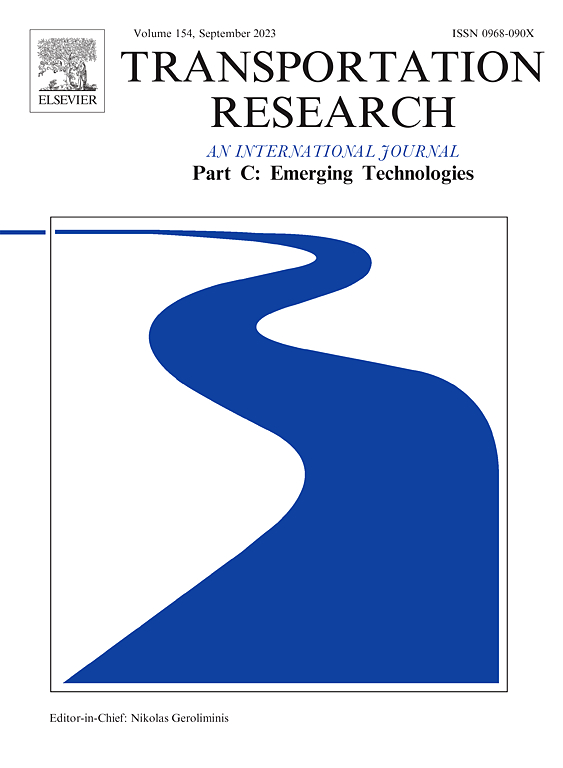MoMaS: Two-sided Mobility Market Simulation Framework for Modeling Platform Growth Trajectories
IF 7.6
1区 工程技术
Q1 TRANSPORTATION SCIENCE & TECHNOLOGY
Transportation Research Part C-Emerging Technologies
Pub Date : 2025-02-01
DOI:10.1016/j.trc.2024.104990
引用次数: 0
Abstract
Mobility platforms such as Uber and DiDi have been introduced in cities worldwide, each demonstrating varying degrees of success, employing diverse strategies, and exerting distinct impacts on urban mobility. We have observed various growth trajectories in two-sided mobility markets and understood the underlying mechanisms. However, to date, a realistic microscopic model of these markets including phenomena such as network effects has been missing. State-of-the-art methods well estimate the macroscopic equilibrium conditions in the market, but struggle to reproduce the individual human behavior behind and complex growth patterns sensitive to platform strategy and policies.
To bridge this gap, we introduce the MoMaS (two-sided Mobility Market Simulation) framework to represent growth mechanism in two-sided mobility markets based on the realistic behavior adjustment of drivers and travelers reactive to platform strategy. In the proposed framework, traveler and driver agents learn the platform utility from multiple channels: their own experience, peers’ word-of-mouth, and the platform’s marketing, all-together constituting the agent’s perceived utility of the platform. Each of these channels is modeled and updated by our S-shaped learning model day-to-day which stabilizes, and at the same time, remains sensitive to the system changes. The platform can simulate any strategy on five levers: trip fare, commission rate, discount rate, incentive rate, and marketing.
While detailed empirical data and actual strategies for platform growth remain largely unknown, MoMaS allows to reproduce series of plausible growth trajectories that were previously unattainable. The framework facilitates the modeling of individual-level behaviors such as reluctance, neutrality, and loyalty, alongside aggregate-level dynamics like critical mass, bandwagon effects, and both positive and negative cross-side network effects.
We illustrate the capabilities of MoMaS through an extensive set of real-world experiments. Our results demonstrate that once the platform acquires critical mass, it triggers a significant positive cross-side network effect, accelerating growth. However, this can be reversed if a negative cross-side network effect is triggered, leading to the collapse of the platform. MoMaS is applicable for real-sized problems and available on public repository along with reproducible experiments.
求助全文
约1分钟内获得全文
求助全文
来源期刊
CiteScore
15.80
自引率
12.00%
发文量
332
审稿时长
64 days
期刊介绍:
Transportation Research: Part C (TR_C) is dedicated to showcasing high-quality, scholarly research that delves into the development, applications, and implications of transportation systems and emerging technologies. Our focus lies not solely on individual technologies, but rather on their broader implications for the planning, design, operation, control, maintenance, and rehabilitation of transportation systems, services, and components. In essence, the intellectual core of the journal revolves around the transportation aspect rather than the technology itself. We actively encourage the integration of quantitative methods from diverse fields such as operations research, control systems, complex networks, computer science, and artificial intelligence. Join us in exploring the intersection of transportation systems and emerging technologies to drive innovation and progress in the field.

 求助内容:
求助内容: 应助结果提醒方式:
应助结果提醒方式:


